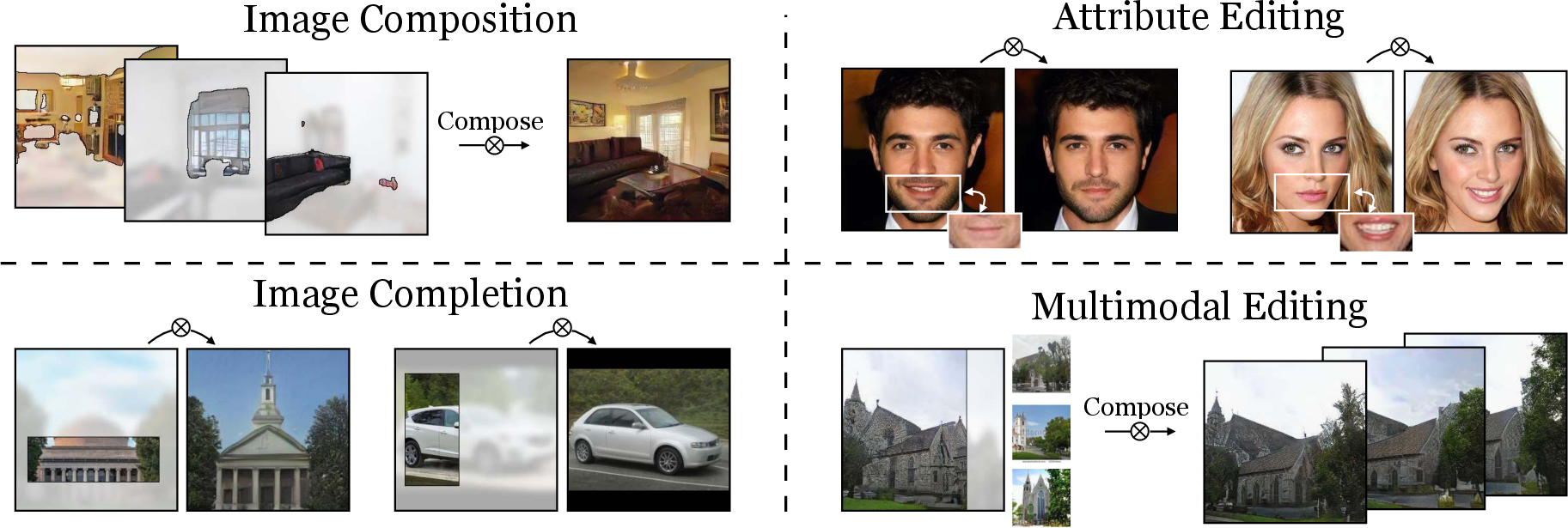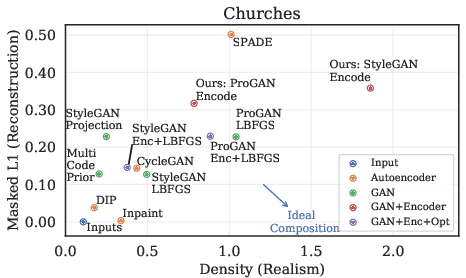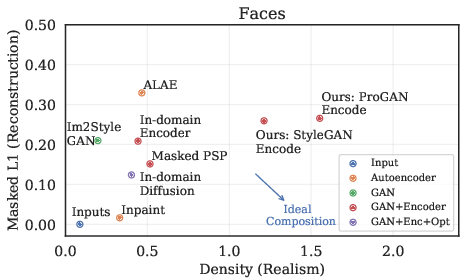- The paper introduces a latent space regression method that deciphers compositionality in GANs and enables diverse image manipulation tasks through a masking mechanism.
- It integrates a fixed pretrained generator with a regressor network to accurately recover latent codes, ensuring high-fidelity and coherent image reconstructions.
- Experimental results demonstrate that this approach outperforms traditional autoencoder and optimization techniques in both reconstruction realism and computational efficiency.
Investigating Compositionality in GANs Through Latent Space Regression
Introduction
Generative Adversarial Networks (GANs) have made significant strides in generating high-quality images from random noise, yet the underlying mechanisms by which GANs transform latent codes into visually coherent outputs remain elusive. This paper introduces a method using latent space regression to analyze and leverage the compositional properties of GANs. By combining a regressor network with a fixed, pretrained generator, the authors propose a framework to explore how image parts and properties are composed at the latent level.

Figure 1: Simple latent regression on a fixed, pretrained generator can perform a number of image manipulation tasks based on single examples without requiring labelled concepts during training. We use this to probe the ability of GANs to compose scenes from image parts, suggesting that a compositional representation of objects and their properties exists already at the latent level.
Methodology
Latent Code Recovery
The key method revolves around a regressor network trained to predict latent codes from input images. This is coupled with a fixed GAN generator, allowing the regression model to map input images onto the generated image manifold, subsequently achieving realistic image synthesis. The loss function used includes image reconstruction and perceptual loss terms, alongside a latent recovery loss tailored to the specifics of the GAN architecture in question.


Figure 2: We train a latent space regressor E to predict the latent code z^ that, when passed through a fixed generator, reconstructs input x. At training and test time, we can also modify the encoder input with additional binary mask m. Inference requires only a forward pass and the input x can be unrealistic, as the encoder and generator serve as a prior to map the image back to the image manifold.
Handling Missing Data
To facilitate inpainting and the blending of image components, the regressor model incorporates a masking mechanism, enabling the network to explicitly handle unknown image regions. This allows the generator to realistically complete scenes with missing parts, preserving the integrity and coherence of the overall scene.


Figure 3: Image completions using the latent space regressor. Given a partial image, a masked regressor realistically reconstructs the scene in a way that is consistent with the given context. The completions (``Inverted'') can vary depending on the exposed context region of the same input.
Experimental Evaluation
Image Composition
The experimental framework involves tasking the networks with recomposing collaged images. These collaged inputs are derived from disparate image parts, and the network must blend, inpaint, and align these inputs into a seamless, realistic output. The results demonstrate the regressor's ability to maintain realism while achieving significant reconstruction fidelity, balancing between these factors effectively across different dataset domains.




Figure 4: Trained only on a masked reconstruction objective, a regressor into the latent space of a pretrained GAN allows the generator to recombine components of its generated images, despite strong misalignments and missing regions in the input. Here, we show automatically generated collaged inputs from extracted image parts and the corresponding outputs of the generators.
Comparison with Baselines
A variety of image reconstruction techniques are compared, including autoencoders and optimization-based methods. These comparisons reveal that GAN-based methods with a regressor are capable of maintaining a balance between realistic outputs and input fidelity, often surpassing other methods in realism and computational efficiency.


Figure 5: Comparing reconstruction of image collages (masked L1) to realism of the generated outputs on random church collages (left) and face collages (right) across different image reconstruction methods, broadly characterized as autoencoders, GAN-based optimization, GANs with an encoder to perform latent regression, and a combination of GAN, regression, and optimization.
Conclusion
This paper presents a novel use of latent space regression as a tool to explore and exploit the compositional capabilities inherent in pretrained GANs. The study demonstrates that GANs inherently possess a compositional understanding within their latent spaces, which can be harnessed for various image manipulation and reconstruction tasks without requiring labeled data. This approach opens up avenues for real-time image editing applications, multimodal image synthesis, and the exploration of generative models' inherent biases and priors. Future work could expand on this framework by exploring more sophisticated manipulations and further dissecting the underlying representations encapsulated in the latent space.












